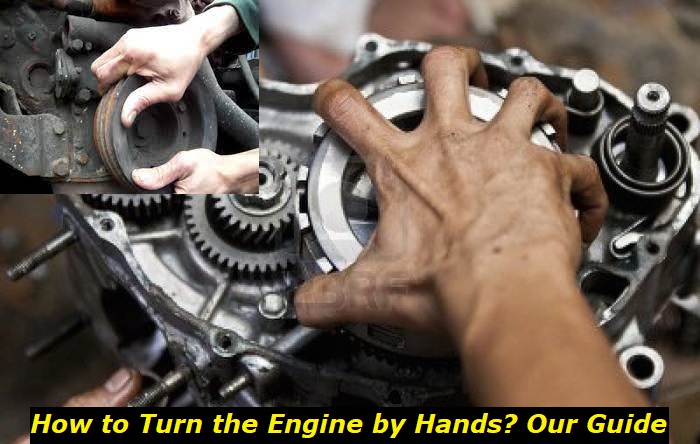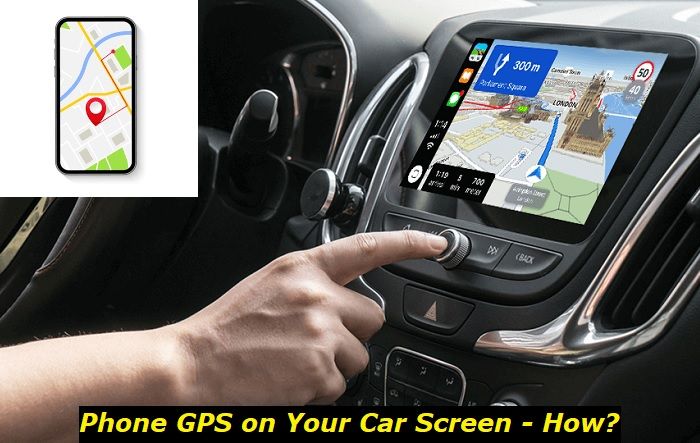Turning the engine of a vehicle by hand is possible, though there are certain steps that you must strictly follow in order to do it without damaging the power unit. In this article, we will show you just how you can do this. However, do remember that these come with certain risks that's why we advise against doing this unless extremely necessary.
Engine use mistakes highlights
- Level of importance:important
- When done:just driving, DIY repairs, DIY maintenance
- Cost of mistake:$200 - $4,000
- How to avoid:read driver's manual, learn how to drive safely, use professional repair andmaintenance
- Consequences:fatal engine issues, expensive breakdowns
- DIY solutions:sometimes possible

How to Turn the Engine Over by Hand?
To begin this procedure, you will need an adjustable wrench and a socket wrench with the correct size sockets for your engine's make and model.
When you're ready, proceed with these steps:
- Step 1
First, disconnect the negative battery cable from the battery. Doing this prevents any electrical damage that could occur if power were accidentally sent through the system while you are manually turning over the engine.
- Step 2
Then, locate your starter motor. It should be at either end of your engine block depending on your specific make and model. Then, use a socket wrench to remove both the large nut and bolt found at the top of the starter motor housing.
- Step 3
Once the nut and bolt have been removed, you can use a hand crank to turn the engine. To do this, insert the adjustable wrench between two teeth of the flywheel or harmonic balancer and give it a few cranks in a clockwise direction. This will cause your engine to turn over slowly. Keep turning until you have gone through one entire revolution.
- Step 4
Along the way, stop and check for any signs of fluid leakage from within the motor housing. If leaks are present, replace the starter motor immediately before further damage is done to your engine block.
- Step 5
To finish off this procedure, reinstall both the large nut and bolt into their original positions at the top of the starter motor housing using a socket wrench, then reconnect your negative battery cable securely.
Doing this will ensure that your engine is now ready to start and be used in your daily routine. However, this should not be done frequently as modern-day engines are no longer designed to be cranked this way. This intrusive method of starting the power unit of your auto also comes with a lot of risks.
Finally, remember to always consult the user's manual specific to the make and model of your vehicle before attempting any further maintenance or repairs on its engine. This will help you avoid damaging expensive components and reduce the chances of a costly repair job down the line.
If followed correctly, this process should give you the best chance of successfully turning your engine over by hand. It is important to remember though that any further maintenance should be left to a qualified professional.
Therefore, if you encounter any issues or difficulties during the procedure, contact a certified mechanic for assistance and advice.
When Do You Need to Do This?
Aside from obvious emergencies, when your ignition system is having trouble kickstarting your engine, here are some situations when knowing how to turn the engine by hand can come quite handy:
1. Initial Vehicle Diagnosis
When you are first diagnosing a vehicle, it can be helpful to turn the engine over by hand to get a better idea of what is wrong and how best to repair it. This will help you identify faulty components such as valves or gaskets that may need replacing.
2. Replacing Parts
If you are looking to replace certain parts such as spark plugs or filters, turning the engine over manually can make this process much easier and less time-consuming than traditional methods.
3. Timing Belt Replacement
If your timing belt needs replacing, then turning the engine over by hand is necessary for you to properly reset the camshaft and crankshaft timing with the belt.
4. Reseating the Rings
If you have recently rebuilt your engine or have had it apart, then turning it over manually is a great way to reseat the piston rings and ensure that they are all properly in place without any risk of damage.
5. Wear Evaluation
This technique can also be used to evaluate any wear on your pistons and other components before they become an issue by manually comparing them side-by-side with new parts as you turn them over.
Overall, if done correctly and safely, manually turning the engine over can save time and money when trying to diagnose and repair certain vehicle issues. Make sure though to always consult a professional mechanic for assistance if you encounter any difficulties during this process.
When is This Not Recommended?
Turning the engine by hand, however, is in no way advisable in the following circumstances:
1. When the Engine is Still Hot
This procedure should not be done while the engine is still warm or hot. Aside from potentially risking yourself to burns, this could cause serious damage to the engine due to increased pressure. Allow your vehicle to cool down completely before you attempt it.
2. When the Spark Plugs are Connected and Energized
Having your spark plugs connected and energized when cranking can cause a severe electrical shock and can potentially damage electronic components in your car's engine components, so make sure these are not connected and energized beforehand.
3. When the Battery Cable is Still Attached
After disconnecting the negative side of your battery cable, be sure to secure this firmly away from the starter motor housing so that it does not accidentally reconnect itself during any part of this process as this could cause a short circuit.
4. When the Fuel System is Pressurized
Turning your engine over while there is gasoline or diesel pressure in the cylinders can potentially cause an explosion, so make sure all fuel sources are completely shut off before attempting this procedure.
5. If You Don't Know What You're Doing or You Lack Experience
Finally, if you do not have a working knowledge of how to turn your engine over safely by hand, then it should always be left to an experienced professional mechanic for diagnosis and repair.
Overall, knowing how to manually turn over an engine can be useful for certain maintenance procedures and repairs, however, it should never be attempted without proper knowledge or understanding of the process itself as well as your vehicle's specific make and model.
Please remember to always exercise caution when dealing with any type of mechanical procedure, and never attempt anything that you are not completely comfortable with. Again, it is always best to consult a professional mechanic for assistance when possible.
What are the Risks to the Engine?
Attempting to turn the engine over by hand comes with plenty of risks in the hands of a novice DIYer. This is the reason why it is always emphasized here that you should leave the job to a professional at all times.
Turning the engine over by hand comes with certain risks when not done properly. Among the most common outcomes of doing it wrong are the following:
1. Bent valves
If the piston is near TDC (top dead center) and you try to rotate the engine manually, then it may cause valve-to-piston contact which can bend the valves. This will lead to reduced performance, loud noises from your engine, and a possible increase in oil consumption.
2. Broken Timing Gears
Turning the crank in reverse when the timing belt or chain is engaged can put excessive force on the camshafts causing them to jump timing or even break their teeth off. Not only will this affect engine performance but it could also cause serious damage to other components such as pistons, valves, and head gaskets due to improper cam timing.
3. Stripped Spark Plug Threads
Turning the engine in the wrong direction can cause spark plugs to unscrew themselves, which can damage the threads in the cylinder head and cause leaks. This is a common issue when trying to start an engine that has been sitting for a long time.
4. Broken Starter Motor
If you try to crank your engine too quickly or with excessive force, it can cause your starter motor to fail due to over-torquing.
5. Damaged Flywheel/Flexplate
Applying too much torque onto the crankshaft while turning by hand can put stress on the flywheel or flexplate causing them to crack or break apart, leaving you stranded until it's replaced.
These are just some of the many issues that can happen when turning an engine by hand incorrectly, so it's important to take the necessary precautions before attempting any such actions. It's always best to consult with a professional mechanic if you're unsure of how to perform the task correctly.
Be aware that numerous things can go wrong which could cause serious damage to your auto when attempting to turn an engine by hand. Practice caution and use the proper tools for the job, or seek out professional assistance if necessary so you can preserve the integrity of your engine for years to come.
Conclusion
"Just because you can doesn't mean you should." This quote can be perfectly applied to this situation, and something that you must tell yourself if you're torn between trying the methods shown here or not. Unless you have a good reason to do so, always leave the job to a professional mechanic when dealing with an engine that can't be started normally.
About the authors
The CarAraC research team is composed of seasoned auto mechanics and automotive industry professionals, including individuals with advanced degrees and certifications in their field. Our team members boast prestigious credentials, reflecting their extensive knowledge and skills. These qualifications include: IMI: Institute of the Motor Industry, ASE-Certified Master Automobile Technicians; Coventry University, Graduate of MA in Automotive Journalism; Politecnico di Torino, Italy, MS Automotive Engineering; Ss. Cyril and Methodius University in Skopje, Mechanical University in Skopje; TOC Automotive College; DHA Suffa University, Department of Mechanical Engineering






Add comment